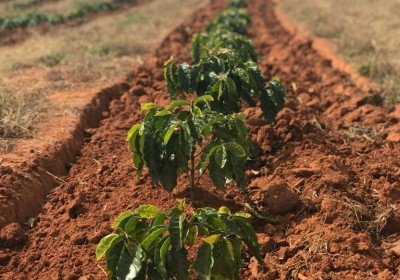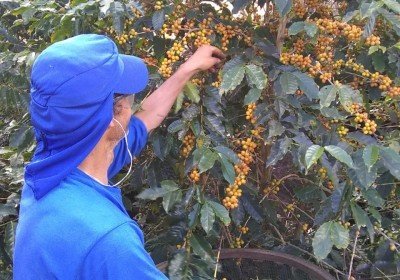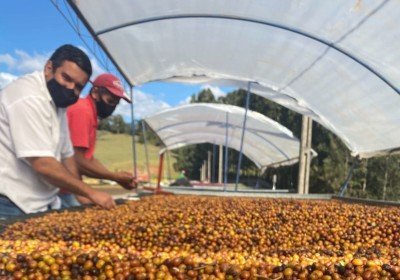 English
English
 English
English
It is ideal that the fruit be ripe, with few green or cereja fruit, in a post-ripening phase, dry or raisin. The manual harvest may be via SELECTION or STRIPPING.
The selective harvest consists of collecting the ripe cereja fruit, ignoring thus the green ones. This kind of harvest is conducted due to the uneven ripening of the fruit, ensuring a higher quality coffee. Periodic movements are carried out without hurting the fruit, selecting only the cereja grains.
The stripping harvest, instead, collects all the fruit from the branch together, no matter their ripening step. The fruit fall on a cloth or canvas stretched over the floor and are collected and selected. For the harvest to be well carried out, it is essential for the coffee crops to be properly pruned.
Mechanic harvest may be conducted with COLLECTING HARVESTERS. Harvesters may be automobile or pulled (attached to an engine). They carry out the stripping, the collection, the shaking and the unloading of coffee with hydraulic systems and vibrating rods.
It is possible to carry out a selective, mechanic harvest regulating the traverse speed and vibration intensity of the rods, totally or partially removing the inferior rods, so that only the fruit on the top of the trees that ripen faster are collected. Stripping harvesters in turn conduct the harvest in only one side of the crop. Usually, cloths stretched all over the floor are employed for the grain selection.
When the harvest is well done, it is responsible for a high quality coffee, since it gives rise to a process of selection of ripe fruit even before sorting the cereja fruit on the farm.
After the grains harvest, the harvested coffees undergo a preliminary cleansing still on the field in order to remove their major dirt, such as leaves and twigs. It is carried out after collecting and manually shaking, with a sieve.
After that process, the grains must be packaged in sacks in the shade and transported up to the place of processing in up to 4 hours. The grains also undergo another cleansing process so that they may be prepared to be toasted.
The grains undergo a process of washing, classification and drying still on the farm for this preparation. The producer may choose to process the grains via a dry or a humid process; the first case results in the coffee called natural (dry, with peel and pulp), while the late one is sorted as peeled cereja, pulped cereja and fermented cereja.
After all the process, the sweeping is essential. Even though a high-quality harvest may reduce grain loss, it is estimated that 10% of the fruit fall on the floor; when they remain by the coffee trees, exposed to the sun and the rain, the fruit undergo undesirable fermentation processes that reduce the quality of the coffee and enable pest to thrive, such as the coffee berry borer.





Submit this form or contact us through our e-mail and phone number.
Mail: contato@mantissacoffees.com.br
Phone: +55 35 3715-2773
Fax: +55 35 3715-2773